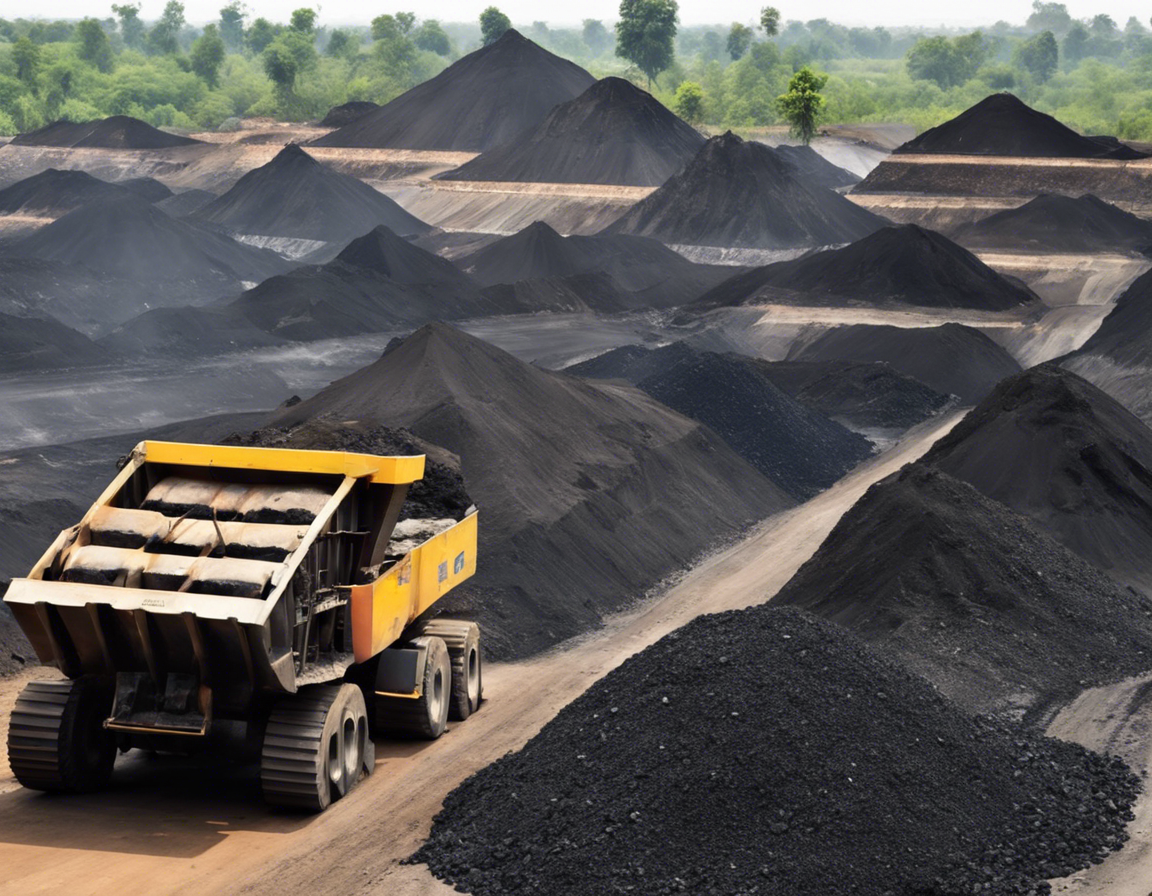Background:
Coal India Limited is a Maharatna company under the Ministry of Coal, Government of India. Established in 1975, it is the largest coal-producing company in the world, supplying coal to various industries like power, steel, cement, and more. As a public sector undertaking (PSU), Coal India plays a crucial role in the energy security of India.
What is Dividend Payout?
A dividend payout is the distribution of a company’s earnings to its shareholders, usually in the form of cash or additional shares. Dividends are often seen as a reward for shareholders for investing in the company.
Coal India’s Dividend History:
Coal India has a track record of generous dividend payouts. The company has consistently shared its profits with shareholders through dividends. The dividend payout ratio indicates the percentage of earnings paid out as dividends. For investors, a high dividend payout ratio can be an attractive feature, as it signifies a commitment to reward investors.
Factors Influencing Coal India’s Dividend Payout:
1. Profitability: Coal India’s profit levels directly impact its ability to pay dividends. Higher profits often translate into higher dividend payouts.
2. Government Regulations: Being a PSU, Coal India’s dividend policy may be influenced by government regulations and directives.
3. Market Conditions: Economic conditions, coal demand, and market trends can also influence dividend decisions.
4. Investment Plans: The company’s future investment plans and capital requirements may impact dividend payouts.
5. Sustainability: Coal India aims to maintain sustainable dividend payments, ensuring long-term value for shareholders.
Importance for Investors:
For investors, dividend payouts can offer several benefits:
1. Income Generation: Dividends provide a source of regular income for investors, especially those seeking steady cash flows.
2. Dividend Reinvestment: Investors can reinvest dividends to purchase additional shares, compounding their returns over time.
3. Stability: Companies with consistent dividend payments are often seen as financially stable and reliable investments.
4. Shareholder Value: Dividends can enhance shareholder value, rewarding investors for their ownership in the company.
Coal India’s Dividend Yield:
Dividend yield is calculated by dividing the annual dividend per share by the stock price. It is a key metric for investors assessing the income potential of an investment.
Coal India has historically offered a competitive dividend yield, making it an attractive choice for income-seeking investors.
Risks to Consider:
While dividend payouts are appealing, investors should also consider the risks associated with such investments:
1. Market Risks: Stock prices can be volatile, impacting the overall return on investment.
2. Company Performance: A decline in company performance may lead to lower dividends or dividend cuts.
3. Inflation: Inflation can erode the purchasing power of dividend income over time.
4. Sectoral Risks: Industry-specific challenges can affect a company’s ability to maintain dividend payments.
Future Outlook:
As the demand for coal continues to be robust in India and globally, Coal India is poised for growth. The company’s focus on modernization and sustainability augurs well for its long-term performance, potentially benefiting investors through sustained dividend payouts.
Conclusion:
Coal India’s dividend payout history, coupled with its strategic growth initiatives, makes it an attractive proposition for investors seeking income and stability. By understanding the factors influencing dividend payments, investors can make informed decisions that align with their investment objectives and risk tolerance.
FAQs:
1. How often does Coal India pay dividends?
– Coal India typically pays dividends annually after the approval of the company’s board and shareholders.
- Can shareholders reinvest dividends in Coal India’s stock?
-
Yes, shareholders can use dividends to purchase additional shares of Coal India, either through a dividend reinvestment plan (DRIP) or manual reinvestment.
-
What is the dividend payment timeline for Coal India?
-
The timeline for dividend payments can vary, but shareholders are typically informed well in advance about the ex-dividend date, record date, and payment date.
-
Does Coal India offer any dividend growth prospects?
-
While past performance is not indicative of future results, Coal India’s track record of consistent dividend payouts suggests potential for growth in dividends over time.
-
How does Coal India’s dividend payout compare to other companies in the sector?
-
Coal India’s dividend payout ratio and yield can be compared to other coal mining companies or PSUs to assess its competitiveness in the market.
-
What impact does the government’s policies have on Coal India’s dividend decisions?
-
Government policies, particularly those related to coal production, pricing, and exports, can influence Coal India’s profitability and, subsequently, its dividend policies.
-
What should investors consider before relying on dividend income from Coal India?
-
Investors should analyze the company’s financial health, growth prospects, dividend history, and market conditions before relying on dividend income as a significant part of their investment strategy.
-
Are there any tax implications for receiving dividends from Coal India?
-
Dividends are subject to tax in India, and investors should consult with tax advisors to understand the tax implications of receiving dividends from Coal India.
-
How does Coal India communicate its dividend policies to investors?
-
Coal India typically includes details about dividend policies, payouts, and plans in its annual reports, investor presentations, and regulatory filings to keep investors informed.
-
Is there any correlation between Coal India’s stock performance and its dividend payouts?
- While stock performance and dividend payouts can be linked, they are not always directly proportional. Investors should consider multiple factors when analyzing Coal India’s stock performance and dividend policies.
